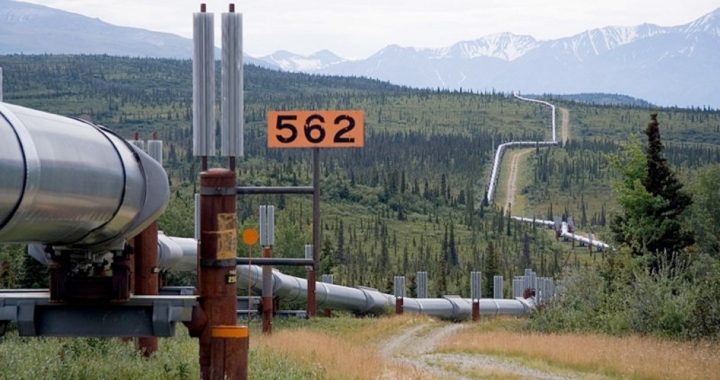
A new proposal by the Obama administration to expand drilling to half of the National Petroleum Reserve in Alaska (NPR-A) has attracted criticism from the oil industry, as the plan still leaves a broad area off limits to new oil development. Interior Secretary Ken Salazar said new development will be permitted in an 11.8 million-acre geographical area, which purportedly holds about 549 million barrels of oil, while coastal regions such as Kasegaluk Lagoon and Peard Bay — where there is a higher concentration of seals and polar bears — will receive “special protection.”
According to the U.S. Geological Survey, the entire reserve harbors about 900 million barrels of oil, a region west of the Arctic National Wildlife Refuge approximately the size of Indiana. Opening up only half of this area to leasing is disappointing, says Erik Milito, a director at the American Petroleum Institute (API). “This falls short of where we need to be.”
In a conference call on Tuesday, API president and CEO Jack Gerard disputed President Obama’s so-called “all of the above” energy policy. “Today, we’re sending a letter to the White House to urge the president and his agencies to do more than merely talk about ‘all-of-the-above’ while they pursue policies that include ‘none-of- the-below,’” Gerard charged.
Gerard protested that the Obama administration’s plan to restrict this vast opportunity for oil development is unacceptable, and that it will further depress the nation’s capabilities to become more energy independent. “One half of the National Petroleum Reserve in Alaska, it was announced just yesterday [August 13], has been taken off limits,” Gerard affirmed. “This is an area by law dating back to the 1920s, [which] was specifically set aside in Alaska for oil and natural gas development. The announcement yesterday by Secretary [Ken] Salazar was essentially an announcement that we’re going to take everything that was legislatively set aside and we’re placing them off-limits.”
President Warren Harding established the NPR-A in 1923 as a resource for the U.S. Navy during a period when its ships were transferring over from coal to oil power. In 1976, the Naval Petroleum Reserves Production Act handed 23.5 million acres over to the Department of the Interior. Then in 1980, the Interior Department Appropriations Act appointed the agency’s Bureau of Land Management to administer oil leasing on the Alaskan land.
Currently, only three million acres of the NPR-A are leased, and Obama’s plan will clear some 12 million more acres for oil and gas exploration. Salazar championed the president’s proposal as an “all of the above” effort to encourage new oil development during a time when the nation needs more energy resources, while “also protecting wildlife and subsistence rights of Alaska natives.”
“This proposal would allow us to continue to expand our leasing in the NPR-A,” Salazar averred, “as we have done over the last three years as part of the Obama administration’s focus on expanding safe and responsible oil and gas development, and builds on our efforts to help companies develop the infrastructure that’s needed to bring supplies online.”
However, industry leaders and critics of the administration argue that the president’s energy policies have only curbed U.S. energy independence through high taxes and burdensome regulations. Gerard said Obama’s energy agenda has imposed a slew of challenges to domestic energy production, such as:
• 85 percent of offshore acreage designated as off limits
• Federal lands in the West designated as off limits
• A push for more regulation on the industry
• Calls for more taxation of the oil and natural gas industry
“We need to see more than lip service from the administration about ending this stranglehold on economic growth and to recognize the enormous economic benefit of America’s oil and natural gas,” Gerard alleged.
Republican Senator of Alaska Lisa Murkowski said the NPR-A area “is not a wildlife refuge,” and that the purpose of the region is to funnel more petroleum to the nation’s energy supply. “This decision denies U.S. taxpayers both revenue and jobs at a time when our nation faces record debt and chronic unemployment,” she stated.
As reported by The New American’s Bruce Walker, the Manhattan Institute estimated that an aggressive oil and gas production policy could supply $7 trillion to the economy, with more than a trillion dollars in lease and royalty revenues to state and federal governments. “Such a policy would also create millions of jobs rippling throughout the economy,” noted Mark Mills, an adjunct fellow at the Manhattan Institute. “While it would require substantial capital investment, essentially all of that would come from the private sector.” Mills continued:
In collaboration with Canada and Mexico, the United States could — and should — forge a broad pro-development, pro-export policy to realize the benefits of our hydrocarbon resources. Such a policy could lead to North America becoming the largest supplier of fuel to the world by 2030. For the U.S., the single most effective policy change would be to emulate Canada’s solution for permitting major energy projects: create a one-portal, one-permit federal policy for all permits.
As high unemployment lingers and as energy prices continue to spike, Americans have expressed unprecedented support for the expansion of U.S. oil and natural gas resources. According to a recent survey issued by the API, 71 percent of voters approve more access to these resources, 90 percent believe new development could generate more U.S. jobs, and 87 percent believe it would significantly reduce energy costs for consumers.
“Strong majorities of voters support more domestic energy development, regardless of party affiliation,” said Gerard, commenting on the poll. “And they don’t like what they’re seeing in Washington where development has been slowed or stopped despite millions of Americans still out of work. Nearly two out of three voters believe the nation is moving in the wrong direction on energy.”
Photo of Trans-Alaska oil pipeline



